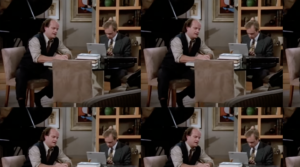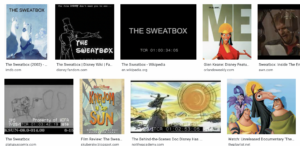Posts by Milo Todd
As the years go by, the average age of debut authors seems to get younger and younger. There’s plenty of reasons why this is great: the YA genre embracing authors who are the ages of their characters, the removal of societal assumptions that younger people can’t contribute to art in a meaningful way, the increase in opportunities for younger writers to access helpful resources, etc.
Conversation about this reality would stop there if two things didn’t start to emerge from this trend: 1) the publishing industry skewing notably toward younger writers to the point of sometimes completely shutting out older writers (meaning older than—gasp—30, 35 tops) for consideration for agent representation, publication, awards, or reviews, and 2) the assumption that the younger a writer publishes, the more “naturally gifted” of a writer they must be, and therefore a better writer than those who debut older.
I’ve taught plenty of creative writing courses, and nearly all my older students have expressed an identical concern: That because they’re older, they’ll be largely ignored by the industry both pre- and post-offer. Worries about age have even hit some of my younger students. On their end, they’ve been fed the assumption that since younger equals better, they must land a book deal right out of the gate. If they don’t, they’re failures, will soon be “too old” to publish in a way deemed meaningful, and they should just give up if their path to publication isn’t a breeze from beginning to end.
That’s just not how any of this works. As someone who’s publishing his debut, The Lilac People, at an apparently older age—To paraphrase a petulant Frasier Crane: I’m not yet “of a certain age,” I’m smack dab in the middle of “not a kid anymore.”—and spent over a decade collecting rejections from various projects, I want to set the record straight about the benefits of publishing older.
Read MoreI often turn to Disney and Pixar for easily identifiable examples of craft elements for my classes, as well as their approaches to plot in general. Their writing is dependably clean, clear, and effective in their most popular movies.
So when I heard there was a documentary Disney had banned about an unfinished movie, I was immediately intrigued. It appeared the documentary filmmakers had been granted unparalleled access behind Disney’s closed doors, gleaning a rumored 150 hours of footage. When the documentary debuted, Disney responded by buying up the rights and shoving the film into their infamous vault.
But the internet being what it is, a fine cut of the documentary exists in fairly frequent rounds. Its contents, however, are less about dirty Disney secrets and more about a universal truth that resonated a little too hard for me as a writer.
The documentary, called The Sweatbox, was directed by Trudie Styler (musician Sting’s wife) and John Paul Davidson, and premiered at festivals in 2002. Named after what the original Walt Disney crew called their screening room—at the time, a wooden shack with no air conditioning—this documentary depicted the wild ride that was the production of The Kingdom of the Sun, which would eventually turn into The Emperor’s New Groove. Why Disney apparently banned the documentary from further distribution, however, was less due to it being about an unfinished movie and more about the grueling process of writing itself–particularly, how often the final project becomes something nearly unrecognizable from its bright-eyed beginnings. The sweatbox, in so many words, is the unhappiest place on earth.
Released in 2000 and loosely set in ancient Peru, The Emperor’s New Groove is the story of Emperor Kuzco, a spoiled young man and unintentional queer icon who decides to build a Kuzco-only water park on the generations-old land of Pacha, a gentle llama herder. When Kuzco simultaneously fires his queer-goals royal adviser, Yzma, she decides to exact revenge by poisoning him and taking over. The plan is predictably botched when put into the hands of her himbo henchman, Kronk, and Kuzco is turned into a llama. Making a false deal with Pacha to spare his land, Kuzco and Pacha must return to the palace to change Kuzco back to human while avoiding Yzma and Kronk, who have since realized their blunder and are hunting Kuzco down.
The film is as silly as you can imagine such a plot to be, bordering on a near Looney Tunes quality of wacky mayhem. So far off the beaten path as it is, the film is frequently forgotten as a movie within the Disney canon. So how did it become what it became?
In late 1994/early 1995, Roger Allers, fresh off his successful co-direction of The Lion King, decided he wanted to make a film set in Peru.[1] After two years of research, planning, and production work with his team, he approached Sting in 1997 to write the music for The Kingdom of the Sun, at which point Sting had put the documentary into his Disney contract as a stipulation. Mark Dindal was also brought on as co-director of the feature film. The entire team then went full tilt into the work.
(A sidenote on representation: This is a movie inspired by Peru and […]
Read MoreOnce upon a time, I was workshopping a new novel. It was my usual sort of thing—transgender historical fiction—only this time I’d gone heavy in the slang department. I’d spent months researching the language of the era and had painstakingly placed the introduction of each unfamiliar word with context clues. I didn’t pause the story to directly explain any of the slang or trans-specific references, worried it would ruin what I hoped was a runaway-train effect to the plot. I also wanted to approach the story the same way as my protagonist: putting our community first and automatically approaching the reader as one of our own. I wanted to preserve a piece of history and make a point at the same time. I wanted to invite outsiders in without catering to them.
Despite a few words here and there that turned out could’ve used some more context clues, my workshopping peers, all of whom were cisgender, were largely quiet about the piece in its entirety and provided little feedback. One person, however, was insistent I wash the language clean and start over.
“Not writing with your audience in mind is selfish,” they’d said. “You should be writing this so that anybody picking up this book can understand these people.” I spent more minutes than I should have trying to help them break down what I felt were some loaded statements, but ultimately explained how it was impossible for me to write the story where any cis person could understand it—even those lacking a minimal understand of trans people—and still be able to tell the story I actually wanted to tell. “Then you’re a bad writer,” was the verbatim response.
No stranger to constructive criticism, I nonetheless left class that day more frustrated and exhausted than I’d ever felt after a workshop. I’d not only lost the majority of my workshop time on the needs of a single individual who wasn’t even my intended audience, but the experience exacerbated the doubt I carried not only for this particular novel, but for myself as a writer. (For more discussion and dissection of situations like these, I highly recommend Matthew Salesses’ Craft in the Real World.)
Among other subjects these days, I instruct various courses about writing outside of one’s lane. But I’ve since realized that the writing world has yet to properly approach conversations about reading outside of one’s lane. While we as writers have begun to embrace writing in voices that aren’t our own, we seem to have yet to learn how to listen to the very people we’re trying to emulate.
Just like writing outside of your lane, reading outside of your lane can strengthen your writing skills and your awareness of the world. But it can also have some challenges for people new to the practice. With traditional publishers beginning to consider more diverse and marginalized writers, if you haven’t yet come across a “non-traditional” book, you likely will in the future. And when that day comes, hopefully the below guidance will help you better understand how to see its beauty. Not only may this guidance strengthen the abilities of “traditional” writers to properly critique a future “non-traditional” workshop partner, but may also help “non-traditional” writers guide […]
Read MorePlease welcome guest Milo Todd to Writer Unboxed today! Milo is a Lambda Literary Fellow in Fiction, a writing instructor at GrubStreet, a regular presenter at the Muse and the Marketplace and the Boston Book Festival, and a consultant for transgender inclusion within the classroom. He wrote THE FALCON OF DOVES, a novel about a trans pirate and his surrogate cis father, during GrubStreet’s Novel Incubator Program, where he was a Pechet Fellow. An excerpt of the story was published in “Emerge: 2019 Lambda Fellows Anthology.” Milo’s work also has appeared on Dead Darlings, Grub Writes, Everyday Feminism, and others.
You can learn more about Milo by visiting his website, and by following him on Twitter and Instagram at @todd_milo.
A Moment of Betterment in Flux
I instruct writing sessions, talk on panels, and chat with fellow budding writers at events. “How do you know when you’re finished?” is the most popular question I’m asked. Or rather, as I can see from the worry in their eyes that mirrors my own insecurities, “How do you know when it’s perfect?”
I tell them it’ll never be finished because it’ll never be perfect, and it’ll never be perfect because your work is always a reflection of yourself. Your work can only be passed off to that place of permanence when you feel you’ve done the best job you can in your current state of being in this current state of time in this current state of the world.
I say this because I’ve experienced it many times myself. After countless editorial passes with the diligence of an unhealthy perfectionist, I finally noticed that a detail in a scene I’d long since believed to be safe was wrong. Set in the late 1600s, my novel offhandedly mentioned a sugar cube, but sugar cubes weren’t invented until the mid-1800s. I was not only frustrated for overlooking this fact for years, but I’d also recently sent that exact scene off for publication in an anthology. It was too late for an edit. That flaw would be in print. Even if my full novel was ever published, I’d know there was that version of the scene floating around the literary stratosphere.
When I was on a writing panel last year, the presenter read aloud my pitch as part of my introduction—which included the phrase “sea daddy,” the term of the time for non-biological father-son relationships on the sea—and the crowd gave a few suggestive, lighthearted hoots. “Please change that phrase on your website to ‘surrogate father,’” my agent asked me soon after, we readying for the submission process. “I worry it’ll be misconstrued if any of the publishers Google you before reading.” I changed it, but the audio recording of the panel still remains on the permanence of the internet.
There are also countless examples beyond my own experiences. The “text speak” of YA novels is now considered cringeworthy. Countless hist fics were left in shambles when Jack the Ripper was believed to have finally been identified. I still have a 90s hardcover copy of Harry Potter and the Prisoner of Azkaban with a typo on page 285. Even […]
Read More












